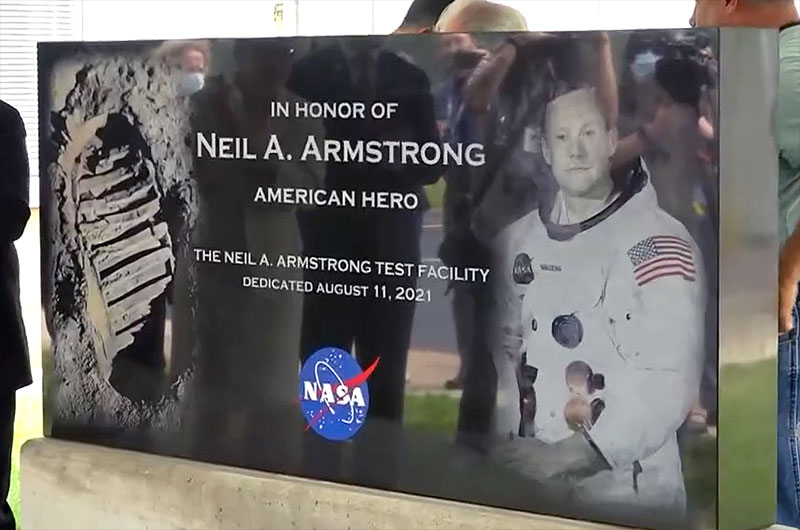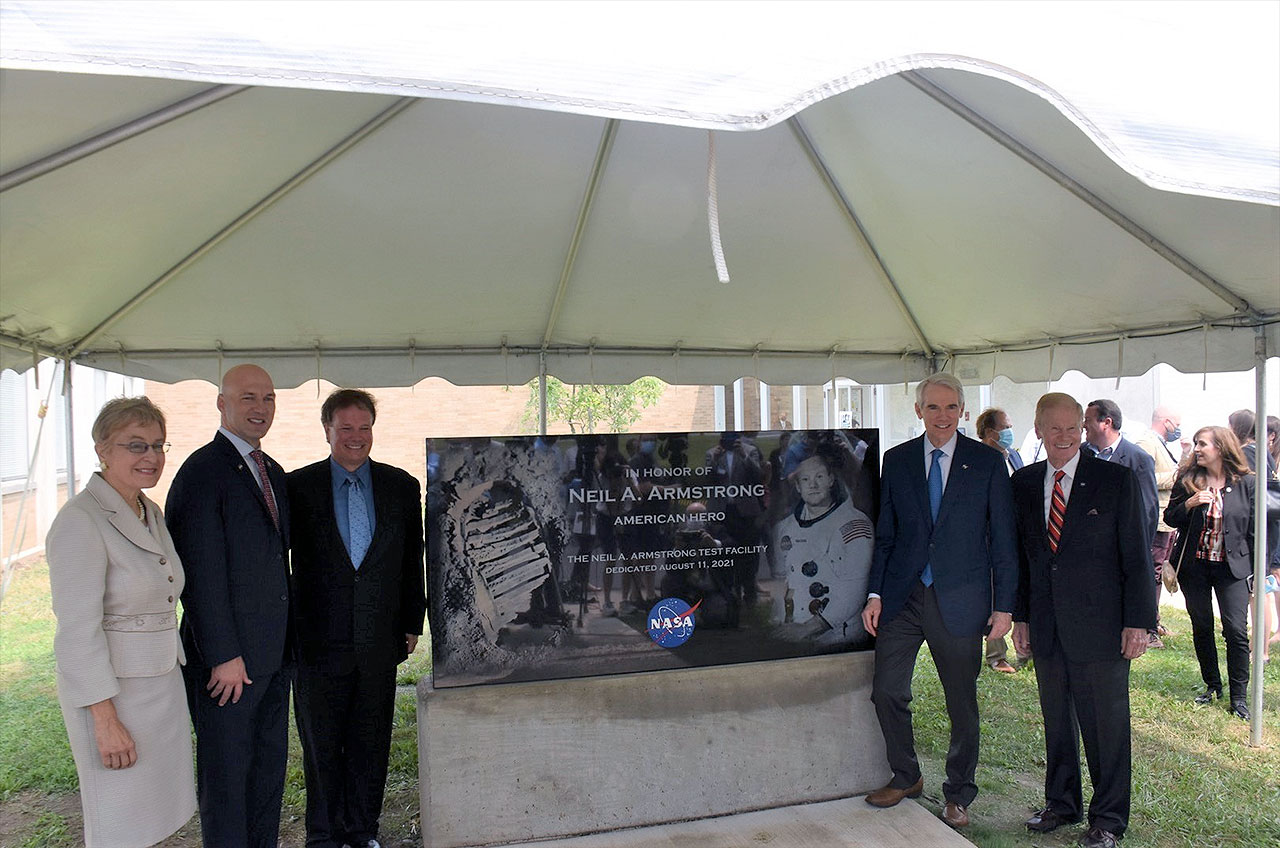NASA dedicates Ohio test facility for first moonwalker Neil Armstrong

Neil Armstrong did not want NASA's Plum Brook Station to be named after him.
The first person to walk on the moon politely declined the honor when asked, but on Wednesday (Aug. 11), nine years after Armstrong died and a week after what would have been his 91st birthday, a group of NASA officials and members of Congress presided over a small ceremony in Sandusky, Ohio, to do just that. Plum Brook Station is now the Neil A. Armstrong Test Facility.
"I wish he could be seated here, at age 91. He would be hiding in the back, very modestly," said Sen. Rob Portman (R-OH), who spearheaded the legislation that led to Wednesday's dedication. "I got to tell you honestly though, he would not be excited about this renaming. He'd be fine with it, but he wouldn't be excited about it — and that is all the more the reason for us to have done it."
Related: NASA's historic Apollo 11 moon landing in pictures
A remote, 6,400-acre campus managed by NASA's Glenn Research Center in Cleveland, the Neil A. Armstrong Test Facility is home to the Space Environments Complex, the world's largest and most powerful space environment simulation chambers, and the In-Space Propulsion Facility, the world's only means of testing full-scale, upper-stage launch vehicles and rocket engines under simulated high-altitude conditions.
The Armstrong Test Facility, which was originally named for a nearby stream, was recently used to subject NASA's Artemis 1 Orion to the extreme temperatures and electromagnetic environment that the spacecraft will encounter on its mission to the moon. The uncrewed flight, which is planned for later this year, will confirm that the capsule is ready to begin delivering astronauts to the moon — following in the 50-year-old footsteps of Armstrong and his fellow Apollo moonwalkers.
"This is part of Neil's dream," Portman said. "Neil was a big advocate of the space program and, in particular, getting Artemis off the ground and moving forward."
Get the Space.com Newsletter
Breaking space news, the latest updates on rocket launches, skywatching events and more!

Armstrong began his NASA career at Glenn Research Center (then called the Lewis Flight Propulsion Laboratory) as a test pilot in 1955. A native of Ohio who spent his childhood in Upper Sandusky, Armstrong flew aircraft at Lewis before transferring to NASA's High Speed Flight Station in southern California (now the Neil A. Armstrong Flight Research Center) and later becoming an astronaut.
NASA Administrator Bill Nelson said it was a "grand occasion" to name something after Neil Armstrong.
"While we bid farewell to one of our most cherished heroes a few years ago untimely early, I am proud we can honor him today," said Nelson, a former senator and space shuttle payload specialist. "It is with Neil's spirit in our hearts and in our minds that we work on the incredible missions here at NASA."
Armstrong's own feelings about the honor are known because Portman asked him about it a year before he died.
"He said, 'You know, thanks, but I really don't need that,'" recalled Portman. "This is what he said, 'The reward I received for my service and sacrifice was the opportunity and privilege to serve. The reward I received was my chance to serve my country. That's all I want.'"
"Ten years later, here we are and we're not exactly following his wishes," said Portman, "but we are following ours. It is particularly important we do it because of who he was. By renaming this special facility after a proud son of Ohio whose extraordinary accomplishment and character we want to hold up as an example for future generations — that's what we're doing."

Mark Armstrong, Neil's youngest son, helped to unveil an outdoor sign bearing the site's new designation.
"It is our family's hope that the Neil A. Armstrong Test Facility will continue to vault us forward for faster and safer aerospace transport," he said, "and this new name will be a beacon for the best, the brightest and perhaps most importantly, the most determined."
Follow collectSPACE.com on Facebook and on Twitter at @collectSPACE. Copyright 2021 collectSPACE.com. All rights reserved.
Join our Space Forums to keep talking space on the latest missions, night sky and more! And if you have a news tip, correction or comment, let us know at: community@space.com.

Robert Pearlman is a space historian, journalist and the founder and editor of collectSPACE.com, a daily news publication and community devoted to space history with a particular focus on how and where space exploration intersects with pop culture. Pearlman is also a contributing writer for Space.com and co-author of "Space Stations: The Art, Science, and Reality of Working in Space” published by Smithsonian Books in 2018.In 2009, he was inducted into the U.S. Space Camp Hall of Fame in Huntsville, Alabama. In 2021, he was honored by the American Astronautical Society with the Ordway Award for Sustained Excellence in Spaceflight History. In 2023, the National Space Club Florida Committee recognized Pearlman with the Kolcum News and Communications Award for excellence in telling the space story along the Space Coast and throughout the world.










